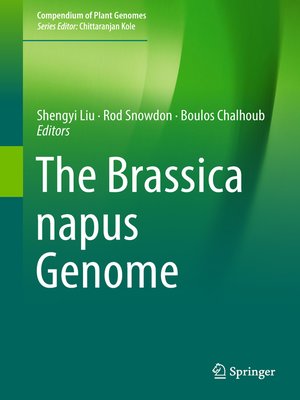
Sign up to save your library
With an OverDrive account, you can save your favorite libraries for at-a-glance information about availability. Find out more about OverDrive accounts.
Find this title in Libby, the library reading app by OverDrive.



Search for a digital library with this title
Title found at these libraries:
| Library Name | Distance |
|---|---|
| Loading... |
This book describes how the genome sequence contributes to our understanding of allopolyploidisation and the genome evolution, genetic diversity, complex trait regulation and knowledge-based breeding of this important crop. Numerous examples demonstrate how widespread homoeologous genome rearrangements and exchanges have moulded structural genome diversity following a severe polyploidy bottleneck. The allopolyploid crop species Brassica napus has the most highly duplicated plant genome to be assembled to date, with the largest number of annotated genes.
Examples are provided for use of the genome sequence to identify and capture diversity for important agronomic traits, including seed quality and disease resistance. The increased potential for detailed gene discovery using high-density genetic mapping, quantitative genetics and transcriptomic analyses is described in the context of genome availability and illustrated with recent examples. Intimate knowledge of the highly-duplicated gene space, on the one hand, and the repeat landscape on the other, particularly in comparison to the two diploid progenitor genomes, provide a fundamental basis for new insights into the regulatory mechanisms that are coupled with selection for polyploid success and crop evolution.
Examples are provided for use of the genome sequence to identify and capture diversity for important agronomic traits, including seed quality and disease resistance. The increased potential for detailed gene discovery using high-density genetic mapping, quantitative genetics and transcriptomic analyses is described in the context of genome availability and illustrated with recent examples. Intimate knowledge of the highly-duplicated gene space, on the one hand, and the repeat landscape on the other, particularly in comparison to the two diploid progenitor genomes, provide a fundamental basis for new insights into the regulatory mechanisms that are coupled with selection for polyploid success and crop evolution.







